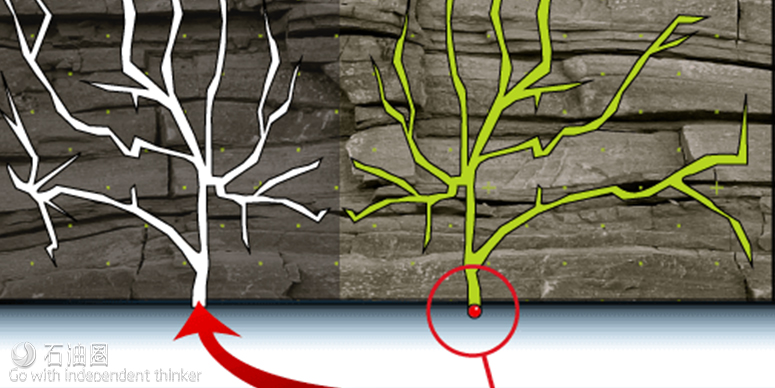The Drill2Frac Engineered Diverter Solution calculates the stresses along the lateral. By knowing the stresses at each cluster, we can determine which clusters will break down and take fluid first, then design the completion in such a way that only those clusters take fluid initially, and that the secondary clusters do not break down during the initial pumping segment. Also by knowing how many clusters will initially take fluid, we can determine how much diverter to use. Then we determine which clusters are likely to take fluid next and design for that.
To ensure that clusters are properly segregated into distinct pump segments, we use a multi-faceted approach which is grounded on a stage-by-stage pressure balance. This pressure balance ensures that clusters are only broken down and treated according to the design. This is done using multiple approaches including placing clusters in opposing stressed rocks, adjusting perforation design, adjusting pump rates, and inducing intrastage stress shadows.
Operating blindly (without knowing rock properties across the stage) can lead to the following undesirable conditions.
- Blocking of perforations without diversion of fluid
- Over pressure from too much diverter
- Inadvertent creation of dominant fractures
When hydraulically fracturing a horizontal wellbore with multiple perforation clusters, the fluid being pumped into the well will preferentially take the path of least resistance. Perforations that are located in the lowest stressed rocks will take a larger amount of fluid, and those perforations located in the highest stressed rocks will receive less fluid, or in some cases none.
One of the ways that engineers are trying to overcome these differences in rock properties, is the use of diverters. A stage with diverter is typically inserted at some point within a hydraulic fracturing pump schedule to seal off dominant fractures, allowing fluid to flow into under-stimulated fractures.
Engineered Diversion methodology currently in use by Drill2Frac examines well heterogeneity and designs the diversion strategy based on actual reservoir properties. This data is then used to bin clusters into primary clusters which will be treated first. This is followed by a diverter slug, then secondary and possibly tertiary clusters. The volume of diverter slug used will be proportional to the number of clusters within the previous bin.
Drill2Frac’s Engineered Diversion Strategy is the only commercial service that analyzes the effect of a well’s lateral heterogeneity on the completion design to help guide exactly where and when diversion occurs. As a result, clusters are stimulated in a controlled and predictable manner resulting in maximum productivity while minimizing screen outs.
Improving Perforating Cluster Efficiency using Engineered Diversion
Diversion is used to more effectively fracture a well by plugging dominant fractures in order to divert the pressure further down the wellbore. This is to enable more perforations to be effectively stimulated – ensuring a uniform distribution of treatment fluid across the treatment interval. Diverting agents inhibit flow to dominant clusters, distributing the fluid to clusters which may be under-stimulated. Drill2Frac’s Engineered Diversion application analyzes a well’s lateral heterogeneity and integrates the analysis with the completion design. This helps model the diversion performance. As a result, clusters are stimulated in a consistent, predictable manner resulting in maximum productivity while minimizing screen outs.
An Eagle Ford operator wanted to better understand their diversion results in order to improve cluster performance and reduce operational complexity prior to scaling up operations.
Model the diversion so that results are more consistent, diverter responses are more predictable, and operational complexity can be reduced.
Using Drill2Frac’s (D2F) OmniLog™ lateral profile, combined with flow simulations performed with PerfAct™ equations, an alternate diversion was designed in collaboration with the operator. Key actions:
- Evaluated the lateral heterogeneity in the horizontal wells by analyzing drilling data.
- Used a PerfAct application select perforation placements for each stage based on the rock hardness values.
- Reduced operational complexity by decreasing the number of diverter drops from three to two drops per stage.
The Drill2Frac Engineered Diversion was validated with a clear indication of positive diversion and a significant reduction in operational complexity for the stages being pumped, going to two diversion drops from three. One well was completed using the D2F Engineered Diversion technique, at the same time as two offset wells were completed on the same pad, using a conventional diversion design. Post-job fracture treatment reports showed that 88% of the diversion drops in the D2F recommendation were successful. In contrast, the two offset wells averaged 64% effectiveness. Also, the number of screen-outs in the D2F well was just 1/3 of the number of screen-outs in each of the offset wells.

 石油圈
石油圈
